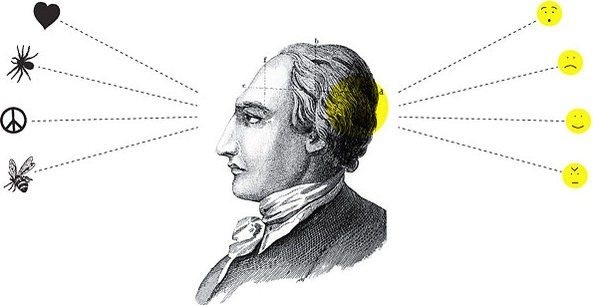No matter which digital marketing strategy you pick up this year, make sure that you have backed yourself up with a good concept. That’s because concepts make digital marketing even more powerful. Let’s take the example of content marketing.
A good content can be written in a number of ways – in the form of stories or maybe, explainers. But the best content style that is actually seen to bring even more reader engagement (and maybe even conversion) is Data Journalism. You might not have thought this one out I bet. But this could be your key to winning the first million, billion or even trillion visitors right now. Read on.
What is Data Journalism?
Data, when added to a marketing strategy, creates a greater impact. But the question is why data journalism is being so popular in the world of digital marketing today?
Data Journalism is a method of analyzing large data sets and presenting it in the manner of visual communication. It is a form of curation that utilizes the technique of communicating the right information with the right kind of visualization elements. So even if you are thinking about building a fun and effective video marketing strategy, this time, using data could bring your groundbreaking results that you had not thought of before.
The Importance of big data lies in the fact that today the digital world is full of information congestion. So much so that it has become increasingly difficult to pay attention or even remember any of it. Besides, let’s not also forget about the relevance of all the information.
The Real Truth about Big Data
Data is an example of a proof of reference. With the arrival of so many advanced technologies, extracting customer behavior patterns have become even easier and all this has made working with data possible. Whether you wish to draw out the latest trends or pinpoint issues, data makes your objective of marketing easier. Such is the effectiveness when data is used in one’s digital marketing strategies.
Speaking of data representation, there are many ways through which data can be represented for driving engagement – infographics, content, videos, etc. But why do you think without storytelling, none of these representations will work? That’s because a story starts with a concept and hence is a powerful medium of communication no matter which visual element you use. That’s what makes Data Journalism an important communicative approach.
Stories make a marketing message memorable, powerful and impactful. In her video, ‘Persuasion and the Power of Story’, Stanford University Professor of Marketing Jennifer L. Aaker points out the manner in which people react when data is represented through a story. She states that data and story, when used together, have the power to resonate with the target audience on an intellectual level. You would love to hear her story. Just click on the play button and watch her speak about the data representation through stories.
Before penning down this article, I was doing some research in order to understand how stories actually work when narrated. I came across this one precious content that talk about the science of storytelling and why it is a most powerful way to activate the human brain. Here is an interesting differentiation that you would definitely not find boring at all. On the contrary, it’s quite mind boggling to say.
The Difference between Stories and Just Visual Representation
It was already mentioned earlier that there are a number of ways that data can be represented visually. You can even consider the simplest example of visual representation like bullet points apart from charts, pie graphs or tables. Many of you often have used bullet points when placing out your data. And why not! Is it not an SEO friendly technique that helps to keep the reader’s attention engaged?
Yes, it is. But the thing with such visual representations like bullet points is that they communicate with the human brain only up to a certain level – the Broca and the Wernicke area that is. This is where only the language of the message gets decoded into meanings and nothing else happens.
Now take the example of stories. The parts of the brain process story in a different way. You see, the language of the story is not just processed by the Broca and the Wernicke area but also hit the cortex area of the brain when experiencing any event. For example – if somebody talks to you about a particularly delicious dish, then it is your sensory cortex area that will get activated. On the other hand, if you are experiencing a motion, then it is the motor cortex area that gets active.
In other words, stories can drive the entire human brain both intellectually and emotionally. The best way that this entire explanation about the impact of storytelling is best described in this one image below.

Stories are the Best Way You can Plant Your Inception
Apart from influencing the sensory influences of our brain, you cannot deny the fact that it’s a great way of making people think the way you desire them to. According to Princeton’s Uri Hasson, stories can actually thread the brains of the narrator and that of the listener, thus creating a chord of imagination. This helps to keep the brains of both the listener and that of the narrator in sync with each other. So, with a great and powerful story, you can actually change the way audiences actually think and behave with your brand.
A Chance to Translate Ideas into Sales
Stories are a great medium of injecting ideas into the head of your target audience. But that’s not just what stories can do. Injecting ideas into the customer’s brain means you are able to influence their power of thinking just the way you want it to be.
As a marketer, you can use stories to make them see how their life would turn out to be had they been the characters in real life. You make them think what your business service could do for them. And that’s how you end up generating more sales. For you have successfully made them relate to your story.
Pitching the Perfect Storytelling Formula
Even storytelling has a specific format that the brain recognizes. Make sure that you do not forget about the beginning, the middle and the end. Also, remember to include elements like conflict, character, resolution and a plot. Keeping these factors in mind, now you can frame your story using the following formula –
- Specifying the problem that you know your target audiences are facing
- Introducing the solution that you have for the problem
- Establishing the world where your service helps to eradicate the problem permanently
Using the above points in your story framework will help you to come out with a comprehensive and compelling idea.
Stories are a great way to make your business or service stand out. It even gives you the power of imagination that is impossible to do with any other business tactics. Create a story that will make a difference for both your business and for your customers.
Image Courtesy: pixabay.com




